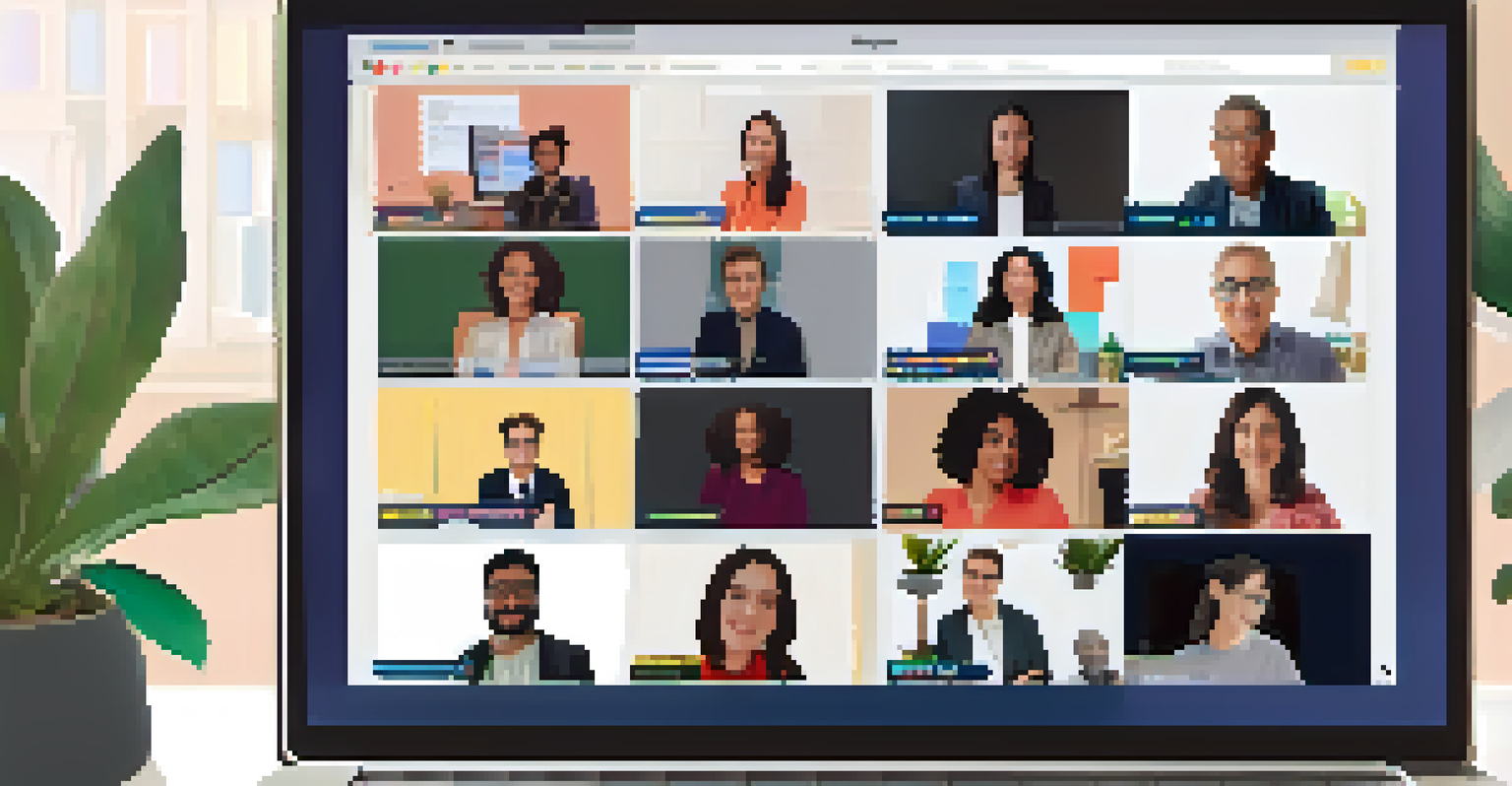Creating Engaging Webinars: Skills for Online Presentations

Understanding Your Audience: The First Step to Engagement
Before you dive into creating your webinar, it's essential to understand who your audience is. Knowing their interests, pain points, and demographics will help tailor your content to resonate with them. For example, if you're targeting young professionals, you might want to focus on practical applications rather than theoretical concepts.
The key to great customer engagement is to understand their needs and motivations.
Engaging your audience means speaking their language and addressing their needs directly. This could involve using relatable examples or addressing common challenges they face. When your audience feels understood, they're more likely to stay engaged and participate actively.
Moreover, consider conducting surveys or polls prior to the webinar. This information not only helps in content creation but also shows your audience that their opinions matter, fostering a deeper connection and commitment to the session.
Crafting Compelling Content: The Heart of Your Webinar
The content of your webinar is crucial in captivating your audience. It should be informative, engaging, and structured in a way that flows logically. Start with a strong introduction that outlines what attendees can expect, and build up to the main points with clear transitions.

Using storytelling techniques can also enhance your content. For instance, sharing a personal anecdote or a case study can make complex information more accessible and relatable. People remember stories far better than facts alone, so integrate them throughout your presentation.
Know Your Audience's Needs
Understanding your audience's interests and pain points is essential for creating engaging content that resonates with them.
Lastly, don't forget to include interactive elements like Q&A sessions or polls. This not only breaks up the monologue but also keeps your audience involved, making the experience feel collaborative rather than one-sided.
Utilizing Visuals: Enhancing Engagement Through Design
Visuals play a significant role in maintaining audience interest during webinars. Rather than relying solely on text, incorporate images, infographics, or videos to illustrate your points. This engages multiple senses and helps to reinforce the message you're conveying.
Good communication is the bridge between confusion and clarity.
When designing your slides, keep them clean and uncluttered. A visually appealing presentation doesn’t just look good; it makes it easier for your audience to follow along. Use consistent branding, colors, and fonts to enhance professionalism and coherence throughout the session.
Additionally, consider the timing of your visuals. Introducing them at key moments, such as transitioning to a new topic, can create a natural rhythm and keep the audience attentive. A well-timed visual can serve as a cue for your audience to refocus and digest the information presented.
Mastering Delivery Skills: The Art of Presentation
Your delivery can make or break a webinar, so honing your presentation skills is vital. Practice speaking clearly and at a steady pace, ensuring that your audience can absorb the information without feeling rushed. A confident and enthusiastic delivery can significantly boost engagement levels.
Body language also plays a crucial role in how your message is received. Even though you're presenting online, maintaining eye contact with the camera, using hand gestures, and varying your tone can create a more dynamic experience. This helps to convey passion and keeps your audience connected.
Create Compelling, Interactive Content
Incorporating storytelling and interactive elements can captivate your audience and foster a collaborative learning environment.
Lastly, be mindful of your environment. Ensure that your background is professional and free from distractions. A well-set stage contributes to your overall credibility and allows your audience to focus solely on your presentation.
Engaging Through Interactivity: Keeping the Conversation Going
Interactivity is one of the key features that can elevate a webinar from standard to exceptional. Encourage participation by incorporating polls, quizzes, or discussions throughout the session. This not only keeps your audience engaged but also gives them a sense of ownership in the learning process.
For instance, asking open-ended questions can prompt discussion and encourage attendees to share their experiences or insights. Creating an environment of dialogue can lead to richer exchanges and make your webinar feel less like a lecture and more like a collaborative experience.
Moreover, utilizing breakout rooms for smaller group discussions can enhance engagement further. This allows participants to connect on a more personal level, fostering relationships and encouraging networking, which can be one of the most valuable aspects of a webinar.
Following Up: Continuing the Conversation Post-Webinar
The end of your webinar shouldn't be the end of the conversation. Following up with participants is crucial for maintaining engagement and building lasting relationships. Sending a thank-you email along with a recording of the webinar can help participants revisit the content at their convenience.
Additionally, consider providing supplementary resources like slides, articles, or links to further reading. This shows that you value their learning journey and encourages them to explore the topic more deeply. It’s also an excellent way to establish your authority and credibility in your field.
Follow Up for Lasting Engagement
Continuing the conversation post-webinar through follow-ups and feedback helps build lasting relationships with participants.
Finally, invite feedback from attendees about what they liked and what could be improved. This not only helps you refine future webinars but also demonstrates that you value their opinions, further solidifying your connection with your audience.
Leveraging Technology: Tools for a Seamless Experience
In the digital age, having the right technology can make a significant difference in the success of your webinar. Choose a reliable platform that suits your needs, whether it be Zoom, Webex, or another service. Familiarize yourself with its features, including screen sharing, breakout rooms, and chat functionalities to enhance the experience.
Moreover, investing in quality audio and video equipment can significantly elevate your presentation. Clear sound and sharp visuals help maintain professionalism and ensure that your audience stays focused on your message. It’s worth testing your setup beforehand to avoid technical glitches during the live session.

Lastly, consider utilizing additional tools for engagement, like audience response systems or virtual whiteboards. These can help facilitate interaction and make your webinar more dynamic, ultimately leading to a more enjoyable experience for your audience.